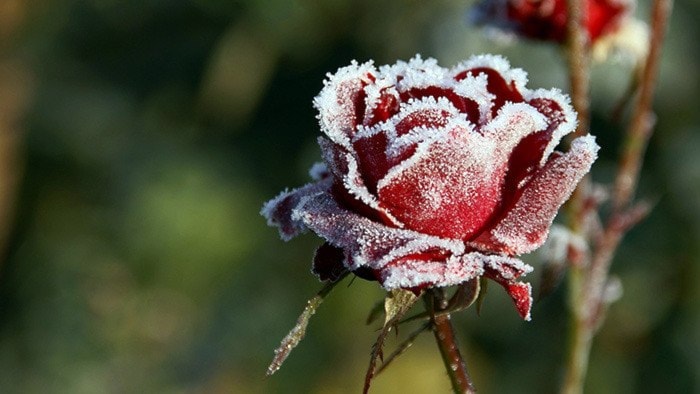It is amazing that many rose bushes are still producing buds and blossoms. If you can pick the odd rosebud for indoor enjoyment, it is like capturing a bit of summer. Any time after November 10th, however, we should be prepared for a cold spell, such as we’re having now.
Winterizing roses is important, not only from an appearance standpoint, but also for their survival should we have severe cold outflow winds. Floribundas, hybrid teas and grandifloras are all treated in much the same manner at this time of year. Using a sharp, clean pair of hand shears, cut all the stems back to approximately 2½ to 3 feet in height. Make all your cuts on an angle to prevent water from seeping into the stems. Next, take out any obvious dead wood, which often is an ideal overwinter hideout for both insects and disease. It might also be a good idea to use a little pruning paint wherever you make a cut to prevent borers from getting inside. I would also pick off all the leaves, especially the disease infected ones and rake up any old decomposed material around the base of the plants.
Climbing roses need to be pruned quite differently. Choose four or five of the youngest and best canes, and prune them back anywhere from four to six feet. Tie the canes to a trellis or arbour to prevent winter winds from thrashing them about. Cut out everything else, and mulch the bud union generously.
Roses in containers can be easily protected by wrapping them with a couple layers of the new N-Sulate cloth for an added 10°C of protection.
The easiest way to winterize tree roses is to wrap a wire frame around them or use 3-4 stakes with netting, and fill the area above the top graft with bark mulch or straw (keep the straw dry with a plastic covering for the best insulation).
Even though your roses look dormant for the winter, their roots are still developing. To protect the bud union, cover their base well with a 12 inch layer of bark mulch, good garden compost or even soil. This protective covering will ensure the survival of your roses even during our coldest weather.
I fully understand how inconvenient it is to go out and spray at this time of year, but you will solve many of your insect and disease problems if you apply a combination spray of mostly organic dormant oil and lime sulphur. The first and most important spraying should be done in mid-November, followed by another application at the end of December and at the end of January. This is an organic spraying, and it will leave the stems of your roses clean, shiny and healthy looking.
Once all the winterizing is done, you may wish to spice up your rose garden, after the weather warms up a bit, by planting winter violas and pansies around them. Let’s face it, as beautiful as they are in spring, thorny branches in winter don’t exactly create an inspiring winter display. You might also want to plant early, mid-season and late daffodils among your roses. In April and May, the bronzy new growth on your roses will provide a spectacular background for the brilliant yellow of the daffodils. This is a classic combination and one which will last up to six weeks. When the daffodil leaves are finished and looking poorly, the growing foliage of the roses will hide those spent leaves.
If you are planting or moving roses now, use well-drained soil with plenty of compost material and bonemeal. Make certain the bud union is just below ground level, and if you cover this union with a 12 inch layer of mulch, there will be little danger of losing them in cold weather. Winterizing now will not only protect your roses but will also keep them healthy and clean for a new beginning next spring.
